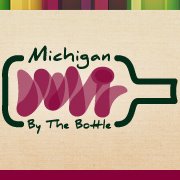Regional Wine Bloggers Expanding Influence
What if your winery could reach thousands of new potential customers by sending one bottle of wine? With extensive internet and social media followings, leading Midwest wine bloggers reach thousands of interested consumers each month. For example, Michigan by the Bottle, a blog that only reviews wines from Michigan, averages over 7,000 unique visits per month. And the Indiana based Midwest Wine Guy, aka Jeff Lawson, averages between 6300 – 7000 unique visitors per month.
Why you want your winery to be featured
With increased interest in local food and drink, many consumers are turning to bloggers for advice on quality regional wines and to learn about Midwestern varietals. If you want to cast the broadest net possible, wine bloggers are a great source of publicity. Ohio based Tim Lemke of Cheap Wine Ratings, who reviews wines $20 and under on CheapWineRatings.com, gets over 30,000 web visits per month. That’s 30,000 potential wine buyers, winery visitors, or recipients for your email newsletter.
Secondly, a wine review written by a popular and respected blogger provides credibility and builds trust. According to Inc.com, consumers increasingly distrust traditional media, such as print ads, TV and radio. Instead they rely more on consumer reviews and Facebook ‘friend” recommendations. Joel Comm, an online marketing consultant, describes the modern consumer’s four step decision-making process as: ‘Like me. Know me. Trust me. Buy from me.” Today’s consumers want to know your story and what makes you unique. In other words, what sets your winery apart from the “wall of wine” grocery store brands?
How to get featured on wine websites
 To be featured by a wine blogger, the first step is easy: Find each blogger’s on-line sample policy and ship them a bottle of your best wine. Or if you have a special event coming up, invite them to attend and review it. Bloggers, like Michigan by the Bottle’s Shannon and Cortney Casey, also work closely with wineries on give-aways, such as the Super Huge Michigan Wine Month Giveaway, which awards prizes every day during the month of April.
To be featured by a wine blogger, the first step is easy: Find each blogger’s on-line sample policy and ship them a bottle of your best wine. Or if you have a special event coming up, invite them to attend and review it. Bloggers, like Michigan by the Bottle’s Shannon and Cortney Casey, also work closely with wineries on give-aways, such as the Super Huge Michigan Wine Month Giveaway, which awards prizes every day during the month of April.
Other wine bloggers that are open to featuring Midwestern wines include: The Other 46, Hoosierwinecellar.com, drinklocalwine.com and Audrey Walker’s Drink Michigan. And for sweet wines see La Vino Dolce, which is written by Minneapolis attorney Troy Stark. In addition, find out who in your area is blogging about local food and wine.
What content should be included with the wine?
Several regional wine bloggers pointed out that Midwest varietals are of particular interest because they have not been extensively written about or reviewed. As a result, writing about a native or hybrid grape is a way for wine bloggers to stand out in the crowded wine blogosphere. But before regional wine bloggers can write about regional wines, they sometimes need to be exposed to what’s going on in their own backyards.
For example, Tim Lemke of Ohio’s Cheap Wine Ratings said he receives a steady supply of old word wines to review; many of which are sent by PR firms representing national or international wineries. However, he said he receives little communication of any kind from Midwestern wineries. Lemke said he would like to feature regional wines that have an interesting story and he welcomes more communications from regional wineries.
According to Midwest Wine Guy Jeff Lawson, helpful information for bloggers includes background on the on the AVA or region, cases produced, retail prices and spec sheets with wine chemistry data. Information on growing conditions for a vintage is helpful too. Lawson said he would also like to know the varietals used in blended wines. (Lawson’s current winery of the month is Mallow Run in Bargersville, IN.)
In regard to the type of winery information that he likes to include in his website, Lemke provided several suggestions: ‘What about the region makes the wine different? Is the varietal suited for the Midwest climate? Does the winery take advantage of macroclimates or a nearby body of water? What inspired the winemaker to produce wine in the Midwest?”
Blog writers with wine making knowledge, like Danny Wood of the Regional Wine Taster in Kansas City, appreciate visiting wineries and speaking directly with owners and winemakers. Wood focuses on showcasing Missouri and Kansas wineries in his blog and short films, but he doesn’t review wines. Wood’s detailed stories appeal to regional wine enthusiasts who are interested in wine making and grape growing practices. These more sophisticated consumers often vacation in wine regions and favor higher price point wines.
Are you ready for new customers?
Now is a great time to review your website to confirm that all information can be easily found both for wine bloggers and consumers. List all wines with details, such as pricing, ordering instructions, pairing suggestions and varietal explanations. While you may be familiar with Norton and Chambourcin, not all consumers are. Also confirm your web site includes contact information, plus high-resolution photos of your winery’s interior and exterior that can be downloaded by writers. Also include biographies and photos of the owner and winemaker.
See related story: Five Steps for a Remarkable Winery Website Design
If your winery is featured on the internet, take advantage of the buzz with Social media and email marketing. Tweet, Re-Tweet and tell all of your Facebook friends that you were featured. This helps grow the wine bloggers following, as well as your own fan base.
Make sure all of your communications with the wine blogger promotes your brand and differentiates you from the competition. Everything you do as a winery influences how people perceive your ‘brand.” This includes your history, customers, reputation, and what the press says about you. Branding also encompasses logos, color palettes and images you use. When creating anything for your winery, always keep in mind what makes you unique.
 Rebecca is the owner of Bauerhaus Design, which specializes in building brands for Midwestern wineries. For more information visit Bauerhaus Design at www.bauerhaus.com
Rebecca is the owner of Bauerhaus Design, which specializes in building brands for Midwestern wineries. For more information visit Bauerhaus Design at www.bauerhaus.com
Home page picture: Jeff Lawson author of the Midwest Wine Guy
[wp_geo_map]



Wine reviews blogs are excellent sources of new customers then there are also bloggers who focus on regional wineries, these types of blogs are also good sources of new customers.